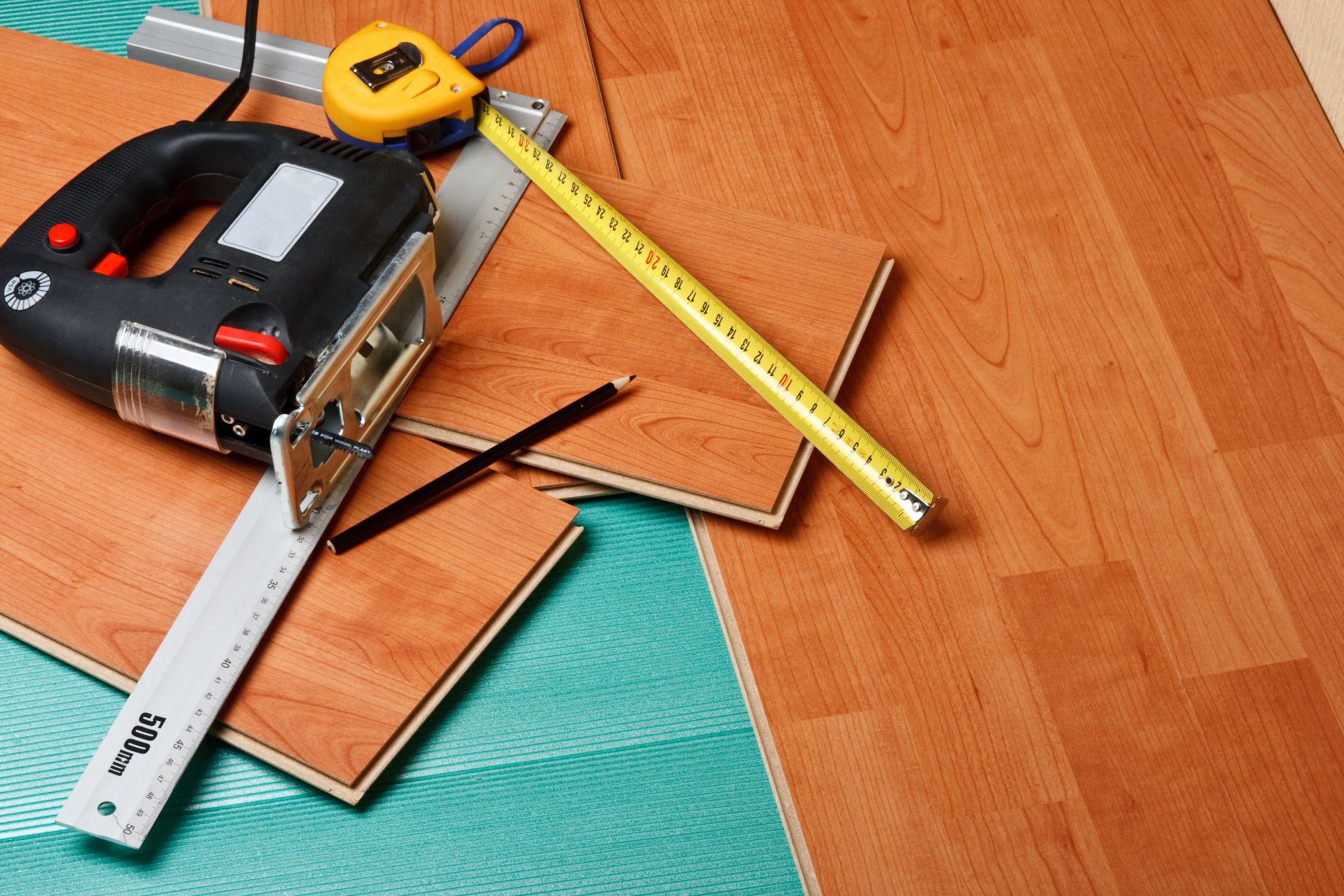Ways to Avoid Laminate Flooring Mistakes by Installing it Right
Want to avoid laminate flooring mistakes by installing it right? Even the best quality laminate flooring product won’t be able to counter the effects of the wrong installation. Following are some of the mistakes that people make when installing their laminate flooring and we provide you with the best ways to avoid those mistakes.
Improper Underlayment
Installed Underlayment could itself be wrong, or it could be installed wrong. Either way, it could lead to numerous troubles as time progresses. There are many functionalities to the underlayment. It prevents the flooring from getting wet by moisture that is often released from the sub-floors, it’s particularly the case with concrete subfloors. Secondly, a proper underlayment will be effective in dialing down the noise and keeping your home from noise pollution. Moreover, it will insulate your floor thereby maintaining a comfortable temperature in your house.
Due to its reduced thickness, laminate flooring will rather feel cold especially when it is installed on an unheated garage or on the ground floor. If you use proper underlayment materials, however, the laminate flooring can be rendered as providing adaptable temperatures to your home. Therefore, make sure you ensure proper installation of the underlayment to avoid any troubles with the laminate flooring.
Insufficient thermal acclimatization
Getting the material to be thermally acclimatized is an important step towards having trouble-free laminate flooring. However, this step is usually skipped, and so bumps on the flooring started to appear. This happens because the laminate flooring, like any other wood, is vulnerable to change as per the changes in the surrounding temperatures. For instance, people usually install a cold laminate into a warm room without rendering the laminate to get warm. This would ultimately result in buckling even when you have ensured the expansion gaps. Therefore, get the materials acclimatized before proceeding with the installation.
Failure to Address Gaps
A quality manufacturing of laminate flooring involves grooves and other aspects that hinge the planks with each other. These features enable the installation crew to protect the flooring from gap formation. When this quality is not ensured by the manufacturers, then the planks start to grow apart with time.
The gaps will manifest themselves in the form of dark lines on the laminate flooring. Use a blunt rubber mallet to tap the planks back their position. If you fail to do, the debris will get accumulated between the planks and thus their fitting would be rendered extremely difficult and you would require the reinstall the flooring.
You should consult the manufacturer or a flooring professional to know which tool to use for inspection of the gaps and the ones that would fix those gaps. Run a monthly inspection so as to cater to the gap formation on an immediate basis and preventing the gaps from getting bigger.
Installing on uneven sub-floor
The performance of the laminate flooring is exceedingly undergirded by the quality of the sub-flooring. Older houses usually have defected sub-floor and getting a thick laminate to be installed over it would be an imprudent choice. It’s imprudent because the laminate floor will expand and contract so as to adjust to the defected subfloor thereby affecting the locking system. This will result in micro-gaps being formed between the boards. If your subfloor has many defects, then you might want to invest in fixing it before you can get the laminate flooring installation that is worth your time and money.
Nailing wall base and/or q-round through the laminate
Another mistake to avoid in laminate floor installation is nailing the moldings to the floor. The nailing is done to keep the boards in place. However, the boards will expand and contract as per the changing conditions. By nailing them, they are being blocked and so will appear as the buckled floor.
Category: Floor Coverings & Installation
Related Articles
Business News
Popular Posts
- Universal Pursuit of Happiness - Wisdom from World Religions
- Overcoming Ego and Self-Centeredness - Lessons from World Religions
- Transcending Materialism - Spiritual Practices from World Religions
- Overcoming Prejudice and Intolerance - Guidance from Global Faiths
- How Mind Balance Can Improve the Mindsets of Employees
- Interfaith Insights by 1WorldPeace - The Top 100 Universal Beliefs in Global Spirituality
- Bridging Beliefs - Finding Common Ground in Love and Respect
- The SmartGuy Vision - A United Future Through Interfaith Love and Respect
- A Cautionary Vision - The Grim Future of a Divided World Without Love and Balance
- A Tapestry of Faiths - Exploring the Common Threads in World Religions
- Fostering Harmony Among Christianity Islam Buddhism Hinduism and Judaism
- Preparing Kids for Adulthood - 15 Vital Skills They Wont Learn in School
- Navigating Diversity - Jerusalem's Tactical Approach to Interfaith Harmony
- Clearing Mental Plaque: The Path to Enhanced Communication and Divine Connection
- Why Return to Jesus Christ and the Church
- Top 50 Ways to Live Longer
- Adventurous Romance -The Key to Enhancing Relationship Chemistry
- Pork Tenderloin with Mustard Cream Sauce
- Navigating Technology and Media for Optimal Mental Well-Being
- Understanding the Link Between Mental Health and Substance Abuse
